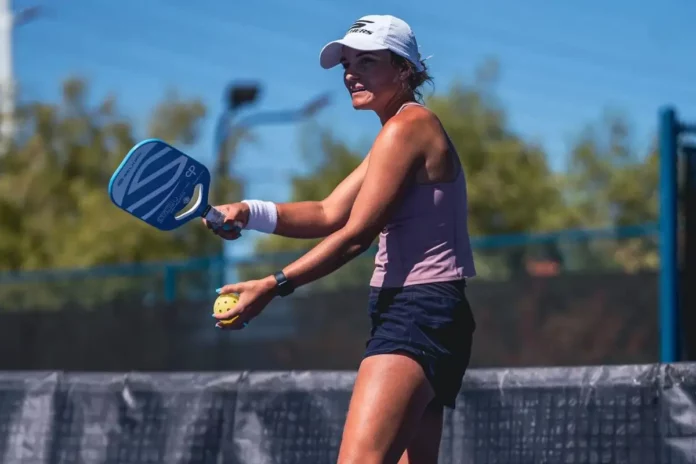Is Your Pickleball Serve Legal: Professional pickleball player Callie Jo Smith recently took to Instagram to explain the intricacies of legal versus illegal serves, helping players at all levels better understand the variations of serving rules. Her video drew attention to common mistakes in serving techniques that can lead to faults for pro players. Her tutorial provides a clear guide to staying within the bounds of legality in competitive play.
The Three Core Rules of a Legal Serve
In her video, Callie Jo Smith highlighted the three main elements that define a legal serve in professional pickleball. First, the ball must be released with a downward motion from a hand held below the waist, with no spin imparted during release.
Second, contact with the ball must occur below the waist and below the wrist to avoid illegal hits. Finally, there must be a clear low-to-high motion during the serve, which ensures a smooth trajectory and keeps the serve fair.
Why Serve #3 Was Illegal
Callie Jo Smith showed several serves in her video, challenging her audience to identify the illegal one. Serve #3 stood out as the fault. In this instance, the ball was tossed upwards rather than downwards, and the paddle made contact above the wrist — two violations of professional serve requirements.
Additionally, the contact point appeared potentially above the waist, though that rule can be difficult to verify precisely in live play. Callie Jo Smith’s breakdown emphasized how even small adjustments to the ball’s release or contact point can impact the serve’s legality.
Stepping into the Court: What’s Allowed
Another critical aspect Callie Jo Smith covered was foot positioning during the serve. She clarified that it is acceptable for a player to step into the court once contact has been made with the ball.
However, if a player steps into the kitchen (the no-volley zone) before making contact, it would result in a fault. This rule helps players avoid gaining an unfair advantage by moving too close to the net prematurely.
Bringing Awareness to Common Mistakes
Callie Jo Smith’s post serves as an educational reminder for amateur and professional players to pay attention to serve details. She praised viewers who noticed the two balls in hand during her demonstration, a purposeful detail she included to keep the focus on serve mechanics.
For anyone serious about competing, Callie Jo Smith’s advice offers an essential breakdown of the serve’s mechanics and how to avoid faults, reinforcing the importance of precision and adherence to rules in pro pickleball.
By educating her followers on these serving fundamentals, Callie Jo Smith is helping to raise the bar in pickleball, promoting clarity and skillful play among the sport’s growing community.
News in Brief: Is Your Pickleball Serve Legal
Professional pickleball player Callie Jo Smith recently shared a tutorial on Instagram to clarify the variations of legal versus illegal serves. She outlined three key rules for a legal serve: the ball must be released with a downward motion below the waist, contact must occur below the waist and wrist, and there must be a low-to-high motion.
Callie Jo Smith also demonstrated an illegal serve, highlighting violations like an upward toss and incorrect paddle contact. She emphasized foot positioning during serves and the importance of precision to avoid faults. Her educational post helps players improve their serving skills and understand the game’s rules better.


